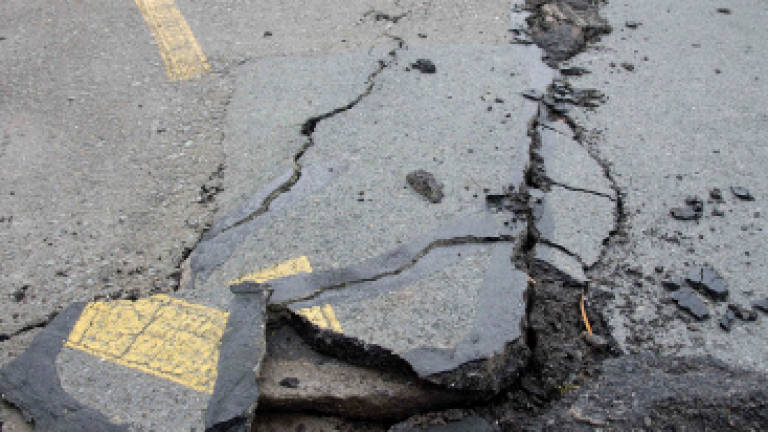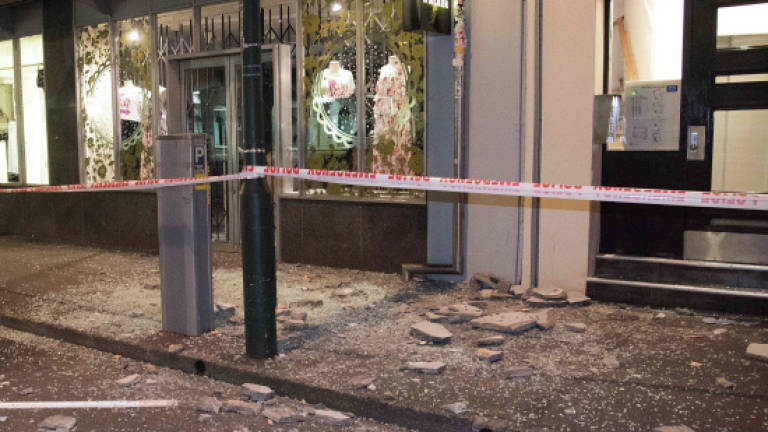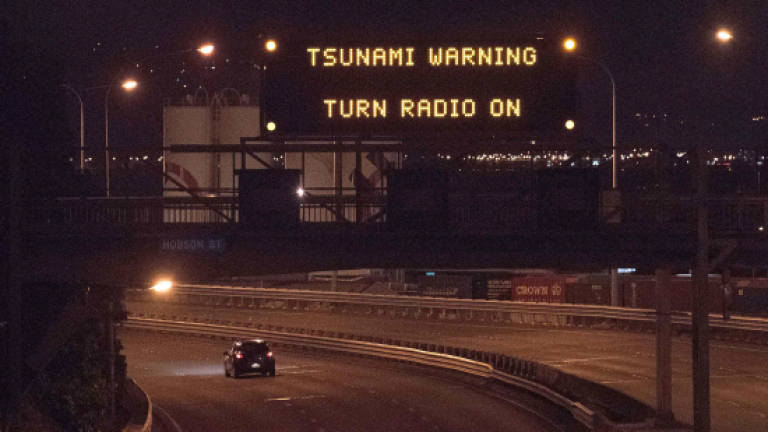Two dead after NZ quake, residents flee tsunami



CHRISTCHURCH, New Zealand: Rescuers in New Zealand were scrambling Monday to reach the epicentre of a powerful 7.8 earthquake that killed at least two people and sparked a tsunami alert that sent thousands fleeing for higher ground.
The jolt, one of the most powerful ever recorded in the quake-prone South Pacific nation, hit just after midnight Monday near the South Island coastal town of Kaikoura.
As dawn broke there was scant information from many nearby rural villages, which were isolated by landslips and fractured telephone communications as strong aftershocks continued.
Prime Minister John Key confirmed two people had died and said "we cannot rule out" that number will rise.
Police were trying to reach the scene of one fatality at a remote property 150km north of Christchurch while another person died in a historic homestead which collapsed at Kaikoura.
"At this point we are unable to give precise details of what caused those fatalities," Key said, adding that communication problems made it difficult to give an accurate assessment.
With roads blocked, a helicopter was taking a search and rescue team to Kaikoura, where aerial television footage showed huge landslips and at least one home destroyed.
Key said military choppers had also been drafted to check the scale of destruction.
"As soon as we can get a much better assessment of the actual damage then we can work out the next steps," he said.
Soon after the earthquake, tsunami warning sirens were activated in South Island coastal towns and along the east coast of the North Island, with police and emergency workers going door to door to evacuate seaside properties.
The ministry of civil defence, responsible for emergency management in New Zealand, initially warned of a "destructive tsunami" with waves of up to five metres.
The first waves were measured around two metres and four hours later authorities downgraded the warning, but said risks remained.
The earthquake struck at 12.02am Monday (7.02pm Malaysia) and was 23km deep, the US Geological Survey said, putting the epicentre in the South Island's North Canterbury region.
It ignited painful memories for residents in nearby Christchurch, which was devastated five years ago by a 6.3 tremor which killed 185 people.
"It was massive and really long," Tamsin Edensor, a mother of two in Christchurch, told AFP, describing the powerful quake as the biggest since the 2011 tremor which was one of New Zealand's deadliest disasters.
"We were asleep and woken to the house shaking, it kept going and going and felt like it was going to build up."
Earthquake engineer Ken Elwood from the University of Auckland said the impact of the latest quake would have been much worse had it hit at lunchtime, like the Christchurch one.
"When it happens in the middle of the day it's a very different story," he told TVNZ.
"People were safe in their homes, homes might get damaged but they're safer for the people inside and that's certainly the blessing of this earthquake."
The main tremor was followed by a series of strong aftershocks, with reports of damaged houses.
'Significant shake'
Marie Black, a local councillor who lives about 50km north of Christchurch, told the New Zealand Herald there were reports of damage to buildings in the North Canterbury region.
"It was a significant shake, I have felt several aftershocks and it is very unnerving," she said.
In the capital Wellington, where shattered glass littered inner city streets, rail and bus services were cancelled and people were advised not to commute to work Monday.
Wellington resident Kevin Simonsen, 72, said he had never experienced such a strong quake.
"It was a rolling motion, very violent," he told AFP. "It just went on and on. You could hear the building creak. It was quite scary and eerie."
Mount Victoria, the city's highest point, was choked with cars in the early hours as residents from low-lying areas sought refuge from a possible tsunami.
"I just packed up my kids and went up to my mum's," Kylie Goodman said.
In several cities guests were forced to evacuate hotels when the quake hit, including Nelson, about 200km from the quake centre where the touring Pakistan cricket team are staying.
"Some of the boys were in prayer, some were watching the India-England Test on TV when we felt the windows shake," team manager Wasim Bari told ESPNcricinfo.
New Zealand is on the boundary of the Australian and Pacific tectonic plates, which form part of the so-called "Ring of Fire", and experiences up to 15,000 tremors a year. — AFP